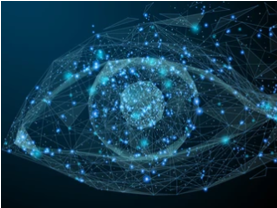Ocular Histopathology Research Using the iEM Platform

A light microscopy is a primary tool in ocular pathology and histopathology research. However, light microscopy cannot capture and grade subtle changes, but electron microscopy (EM) can. We have extensive experience in the histology and histopathology of mice, rat, monkey ocular tissues at the electron microscopical level. Creative Biostructure offers an integrated EM platform that includes scanning electron microscopy (SEM), transmission electron microscopy (TEM), confocal laser scanning microscopy (CLSM), atomic force microscopy (AFM), and corresponding accessories and software. We are dedicated to helping our clients to investigate the pathogenesis or prognosis of ocular disease (such as orbit diseases and conjunctiva disease).
Electron Microscopy (EM) in Histopathology Research
EM is applied to investigate a wide range of biological and other specimens at an ultrastructural level, providing high-resolution images. Transmission electron microscopy (TEM) can provide high-resolution images and is able to visualize small intra- and extracellular structures (e.g. cell organelles, cellular inclusions, microfilaments, and collagen). Therefore, it is generally used in diagnostic pathology. SEM allows the study of surface structures of tissue and provides useful information about cell composition, contour, and diameter, facilitating an understanding of how ocular tissue is organized. In addition, AFM is another useful tool in histopathology research. AFM can produce high-resolution surface morphology characterization in liquid with minimal sample preparation. Molecular-scale properties of diseased eyes can be identified within the native environment of the sample, providing insight into molecular reorganizations that cannot be observed by other techniques.
Ocular Histopathology Research at the iEM Platform
Our platform is equipped with state-of-the-art electron microscopy along with a number of subsidiary techniques, such as immunogold labeling and negative staining. Based on these advanced instruments, our experienced team of experts can provide a full range of ocular histopathology services, including research design consultation, automated preparation and processing of tissue, EM imaging, elemental and particle analysis, digital image acquisition and analysis. Automation and sample preparation improve the speed and reliability of our EM analysis.
- Visualization of retinal changes in nonclinical toxicity studies
We provide equipment and expertise in the preparation of ocular tissue for analysis by TEM. Due to the spherical shape of the eye, we have improved the traditional TEM trimming and embedding techniques to facilitate successful sectioning of different components of the eye.
- Characterization of disease models
Typically, electroretinography (ERG), optical coherence tomography (OCT), and other techniques are applied to fully characterize a finding in murine models of ophthalmologic disease. High-quality TEM is able to provide a critical, image-based link between these methods, supporting a more confident interpretation of ERG or OCT results.
In nonclinical toxicity and efficacy studies, the ultrastructural pathology is vital in the morphologic evaluation and subcellular structure characterization. Creative Biostructure is an innovative, quality, and technology solution-driven company. Our platform provides all levels of technical support and consultation for our customers who need analysis and SEM, TEM, AFM imaging. Please feel free to contact us. We"d be happy to discuss any projects and see how we can support your work.

